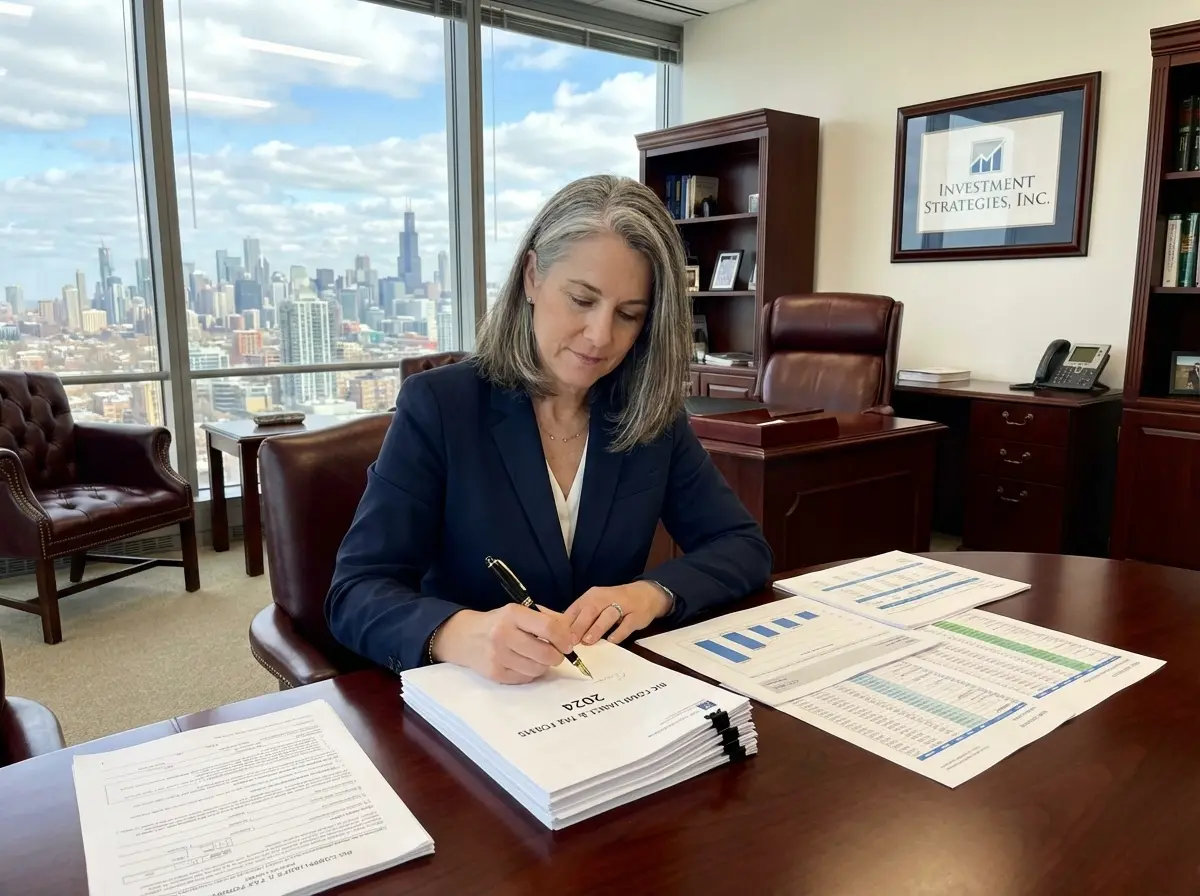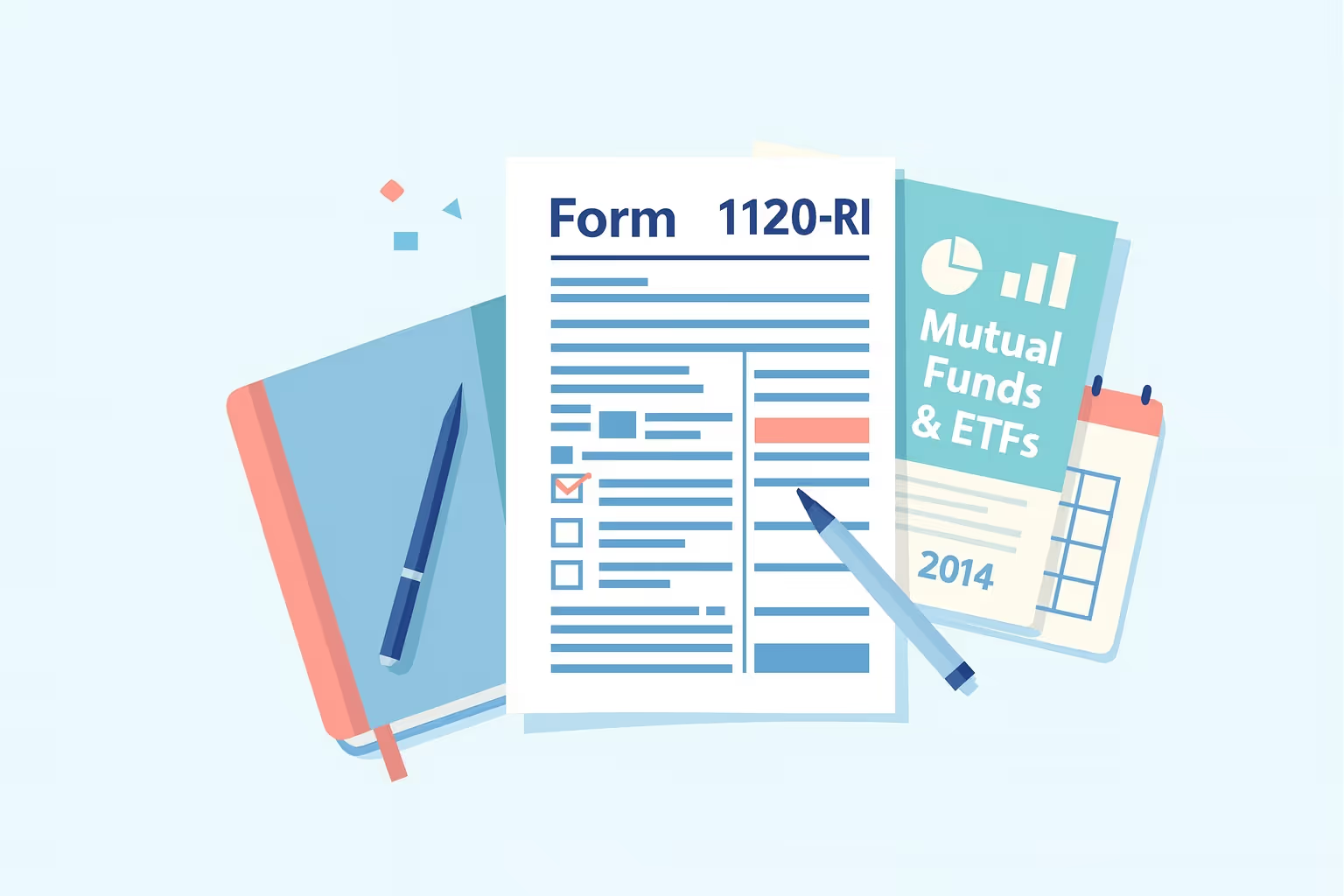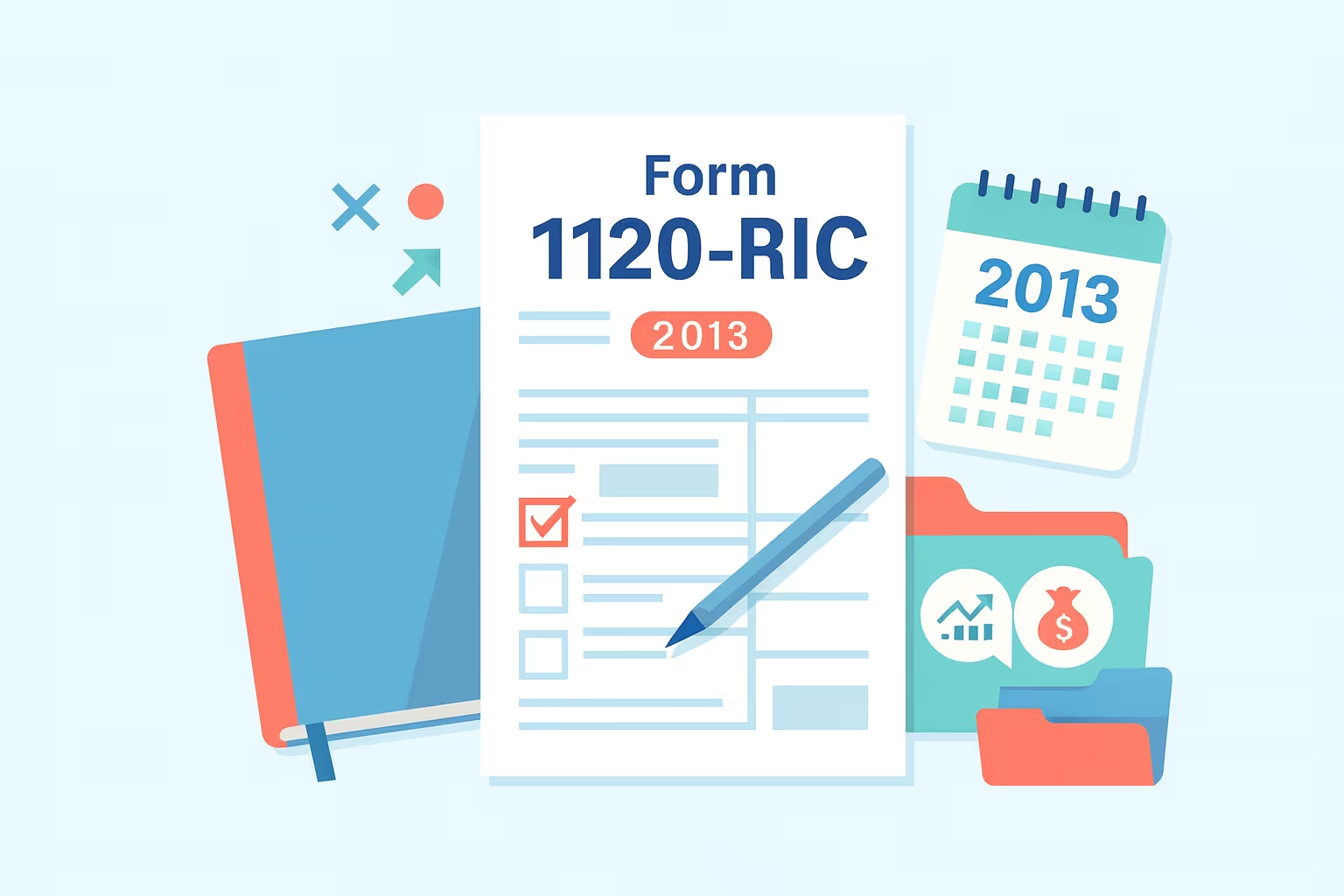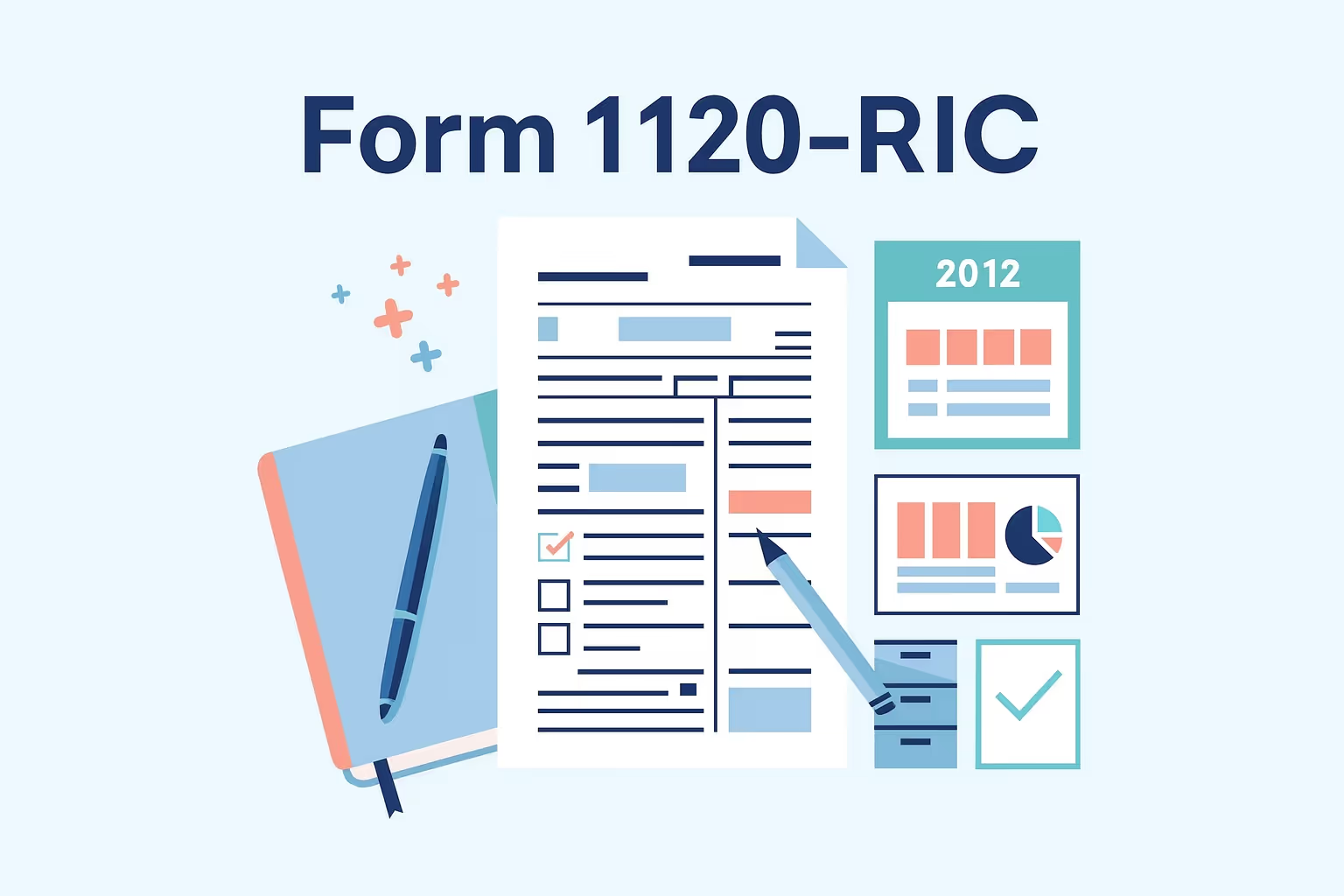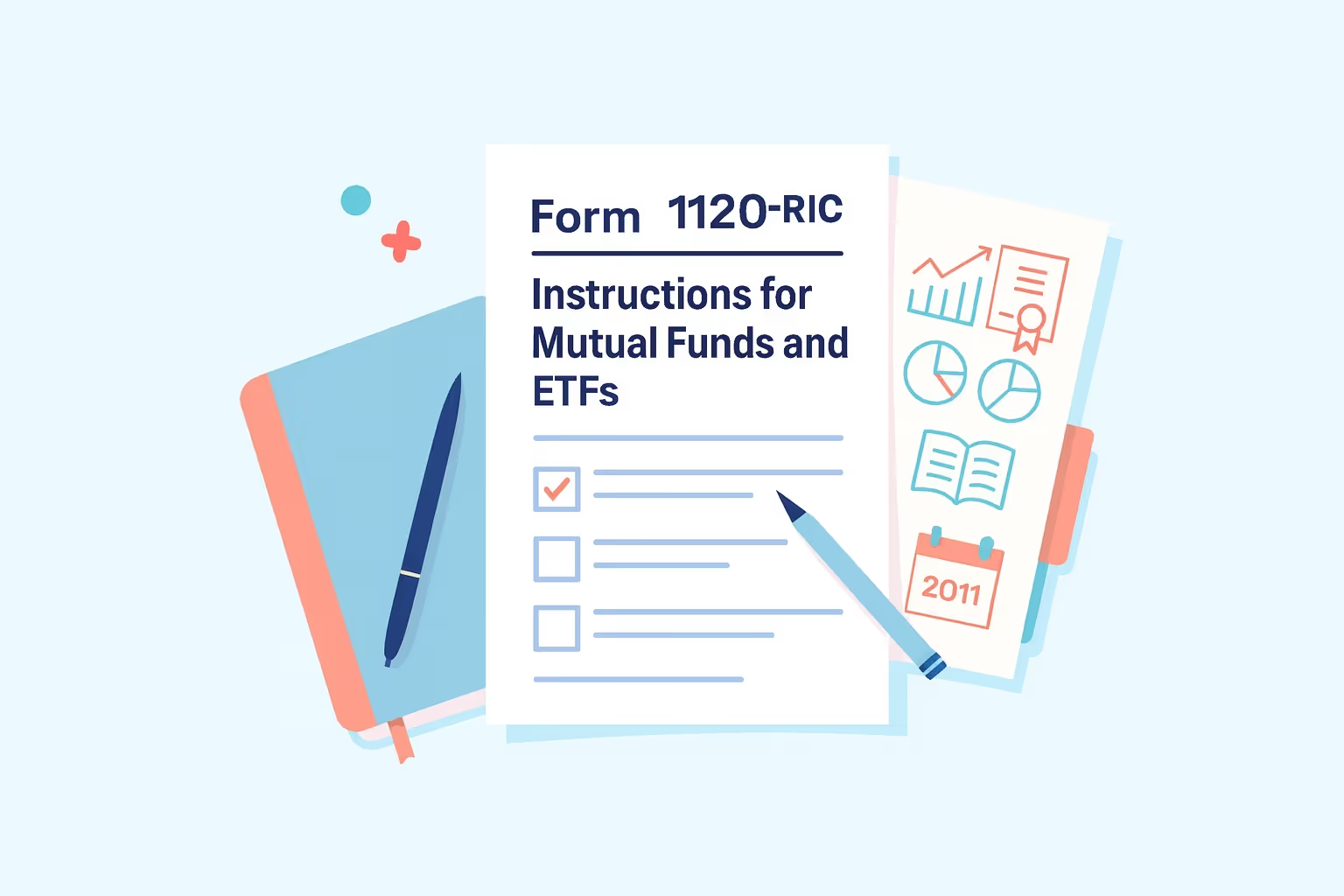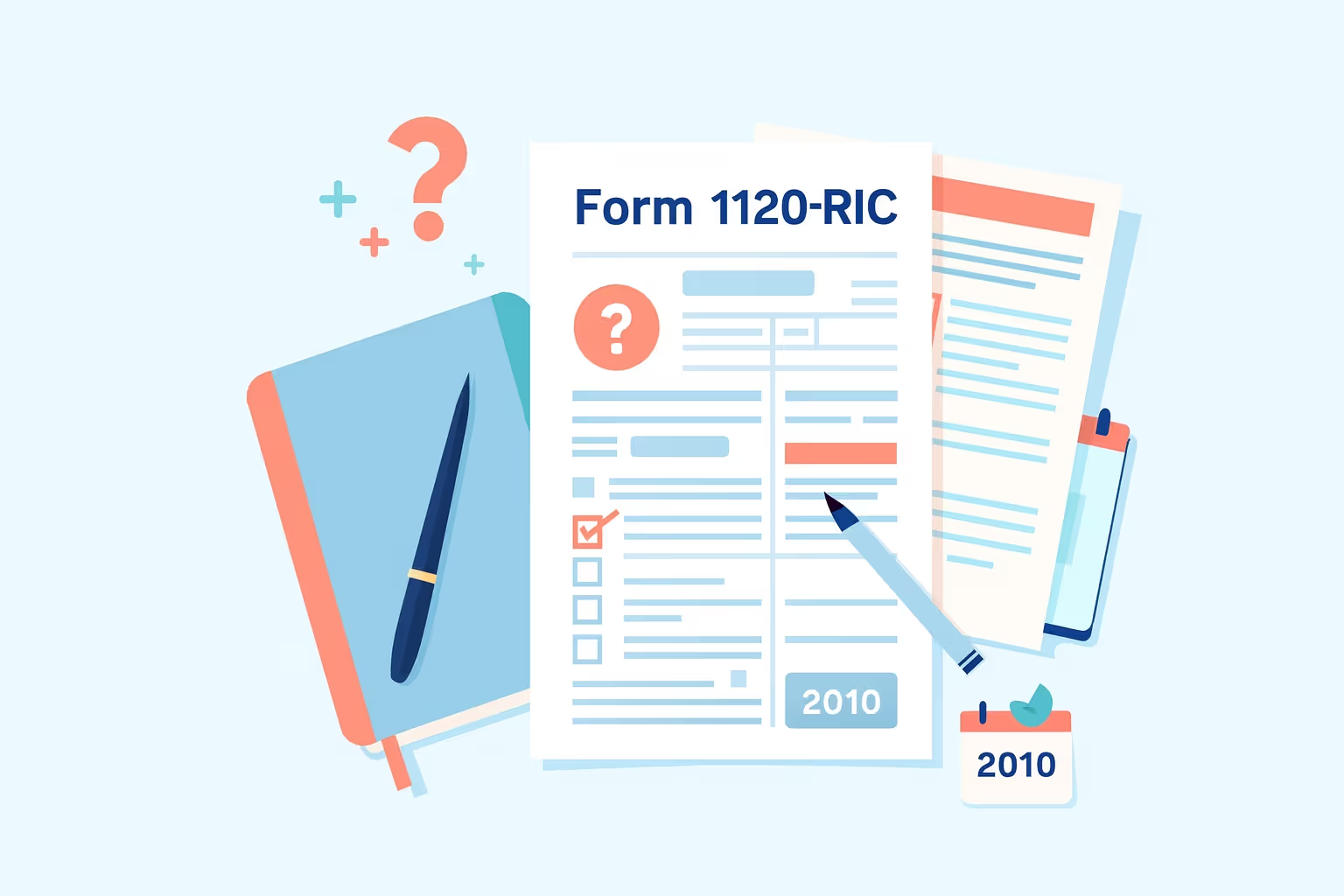
What IRS Form 1120-RIC (2017) Is For
IRS Form 1120-RIC (2017) is the income tax return used by regulated investment companies to report their annual activity to the Internal Revenue Service. Mutual funds, certain investment funds, and other domestic corporations that elect to be treated as RICs use this form to report taxable income, gains, losses, deductions, and credits. The return also includes required schedules, such as Schedule D, and supporting statements for dividends and distribution calculations that help confirm the company meets specific requirements for RIC treatment.
When You’d Use IRS Form 1120-RIC (2017)
You use IRS Form 1120-RIC (2017) when a regulated investment company must file an income tax return for the 2017 tax year. This requirement applies to original, late, or amended filings. Below are the most common situations.
- Late Return Filing: This form is used when filing a late return after receiving an IRS notice, such as a CP59 for a missing return.
- Correcting Distribution or Capital Gain Errors: This form is used when correcting misreported shareholder amounts, distributions, or capital gains through an amended return.
- Compliance Review Adjustments: This form is used when a compliance review identifies issues with taxable income, deductions, or credits. An updated return allows the IRS to process the corrected figures.
- Filing After Transcript Review: This form is used when IRS transcripts show that earlier filings or payments were unclear and a return must be filed.
- Corrected Return Submission: This form is used when federal updates require a revised state return or when new information must be reported for the 2017 tax year. A corrected submission ensures the IRS receives the most accurate data available.
Key Rules or Details for the 2017 Tax Year
The 2017 tax year has several rules that affect how a regulated investment company completes IRS Form 1120-RIC (2017). Key points include:
- Tax Cuts and Jobs Act Changes: RICs with fiscal years crossing January 1, 2018, must apply blended tax rates that combine pre-2018 graduated rates with the new 21% flat rate.
- Blended Tax Rate Worksheets: Fiscal-year filers must use the worksheets in the instructions for Form 1120 to calculate the correct tax for the portion of income earned before and after January 1, 2018.
- Late Filing Penalty Rules: Returns filed more than 60 days late face a minimum penalty equal to the tax due or a fixed amount set for the year. Penalties may increase if the corporation has unpaid taxes.
- Disaster-Related Charitable Contribution Rules: Special provisions applied to contributions related to Hurricanes Harvey, Irma, and Maria, allowing an increased deduction in some instances.
- RIC Distribution Requirements: An RIC must follow specific rules regarding the amount of investment company taxable income and capital gains it distributes to maintain its status and avoid being taxed twice.
- Excise Tax Requirements RICs that did not distribute required amounts for the calendar year may need to file Form 8613 to figure the 4% excise tax on undistributed income.
Step-by-Step (High Level)
For a Regulated Investment Company (RIC), the federal return for regulated investment activity is Form 1120-RIC (2017).
- Confirm IRS records: Review IRS account transcripts to see prior filings, payments, and current income tax obligations under tax law and IRS regulations.
- Check entity status and structure: Confirm that the fund is not an S corporation or a personal holding company and that its RIC status election remains in effect. Verify that total assets and the portfolio hold valid investments for RIC treatment.
- Assemble financial data: Gather income, capital gains, deductions, credits, and other income items. Use this information to figure out the net income and the income tax liability that belongs on the form.
- Prepare the 2017 form: Complete Form 1120-RIC as the tax return for regulated entities and as the official Form 1120-RIC U.S. income tax return for the fund. Draft the return so that it satisfies income tax obligations at the corporate level and helps avoid double taxation for shareholders, while disclosing any remaining exposure to double taxation.
- File and keep records: Sign and file the return by the correct due date, including any short-term or final return if the fund changes its structure or closes. Keep complete copies and workpapers to support future reviews and audits.
Common Mistakes and How to Avoid Them
Errors on IRS Form 1120-RIC (2017) often come from missing information or incomplete reviews. These mistakes can affect how the return is processed and whether the RIC meets key requirements. Below are common issues and ways to prevent them:
- Overlooking estimated tax payments: Ensure that all estimated costs have been posted to the IRS account before completing the return.
- Using the wrong employer identification number: Utilize the company’s official IRS notice or prior returns to verify the correct employer identification number.
- Maintain substantial asset diversification: Review investment holdings quarterly and confirm they meet diversification rules before year-end.
- Missing schedules or other forms: Use a checklist to ensure every required schedule and supporting statement is included.
- Incorrect handling of profits and cash flow: Reconcile income and cash balances to accounting records before preparing the tax return.
What Happens After You File
After you file IRS Form 1120-RIC (2017), the IRS reviews the return and updates its records for the regulated investment company. Paper filings may take several weeks to process, whereas electronic filings are processed more quickly. The IRS may send a notice requesting clarification if entries do not match prior information. If the return shows a balance due, payment options include Form 9465 or the Online Payment Agreement. Any adjustments may lead to interest charges until the full amount is paid.
FAQs
How do I file an income tax return for a 2017 RIC?
You complete Form 1120-RIC U.S. for the 2017 tax year and follow the official instructions for the form to report income, gains, deductions, and distributions. Late returns can still be filed even if the refund period has expired.
Do estimated tax payments affect my 2017 filing?
Yes, you should review all estimated tax payments posted to your IRS account. These payments reduce the balance due and help ensure the figures on the return match IRS records.
Is Form 1120-RIC considered a corporation income tax return?
Yes, it functions as a corporate income tax return for a regulated investment company, reporting taxable income, dividends, and capital gains for the year.
Do I need my employer identification number to file?
Yes, the return must list the correct employer identification number, and it should match IRS records to avoid processing delays or verification notices.
Where can I find the instructions for Form 1120?
The official instructions for Form 1120 and the specific instructions for Form 1120-RIC are available on the IRS website at IRS.gov. They explain schedules, reporting rules, and filing requirements.







